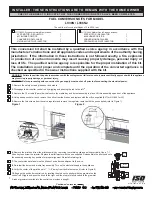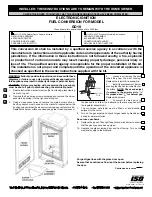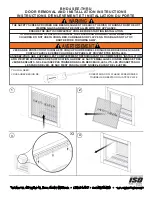
Introduction
©
2016-2017 SR Research Ltd.
7
1.3 System Specifications
1.3.1 Operational / Functional Specifications
Head-stabilized Mode
Remote Mode
(Head free-to-move)
Average Accuracy
1
Down to 0.15° (0.25° to 0.5° typical)
0.25-0.5° typical
Sampling rate
Monocular: 250,500,1000,2000 Hz
Binocular: 250,500,1000,2000 Hz
Monocular: 250,500,1000 Hz
Binocular: 250,500,1000 Hz
End-to-End Sample Delay
2
1000 Hz: M=1.88 ms SD=0.36 ms
2000 Hz: M=1.34 ms SD=0.18 ms
500 Hz: M=3.21 ms SD=0.61 ms
1000 Hz: M=2.10 ms SD=0.37 ms
Blink/Occlusion Recovery
1.0 ms @ 1000 Hz
0.5 ms @ 2000 Hz
2.0 ms @ 500 Hz
1.0 ms @ 1000 Hz
Spatial Resolution
3
0.01°
Noise with Participants
4
Filter (Off/Normal/High):
1000 Hz: 0.03°/0.02°/0.01°
2000 Hz: 0.05°/0.03°/0.02°
Filter (Off/Normal/High):
500 Hz: 0.03°/0.02°/0.01°
1000 Hz: 0.05°/0.03°/0.01°
Eye Tracking Principle
Dark Pupil - Corneal Reflection
Pupil Detection Models
Centroid or Ellipse Fitting
Ellipse Fitting
Pupil Size Resolution
4
0.1% of diameter
Gaze Tracking Range
Customizable – Default is 32 º horizontally
×
25 º vertically
Allowed Head Movements
Without Accuracy Reduction
±25 mm horizontal or vertical
20 cm
×
20 cm at 52 cm
Optimal Camera-Eye Distance
42 - 62 cm
Glasses Compatibility
Excellent
On-line Event Parsing
Fixation / Saccade / Blink / Fixation Update
EDF File and Link Data Types
Gaze, Raw, and HREF eye position data/ Pupil size / Online events /
Buttons / Messages / Digital inputs
Real-Time Operator Feedback
Eye position gaze cursor superimposed on static image or position
traces with camera images and tracking status.
Specifications are preliminary and subject to change without notice.
1
Measured with real eye fixations at multiple screen positions on a per subject basis.
2
Time from physical event until first registered sample is available via Ethernet or Analog output. Optional
data filter algorithm adds one sample delay for each filtering level.
3
Measured with an artificial eye.
4
Measured with real subject fixations.
















































